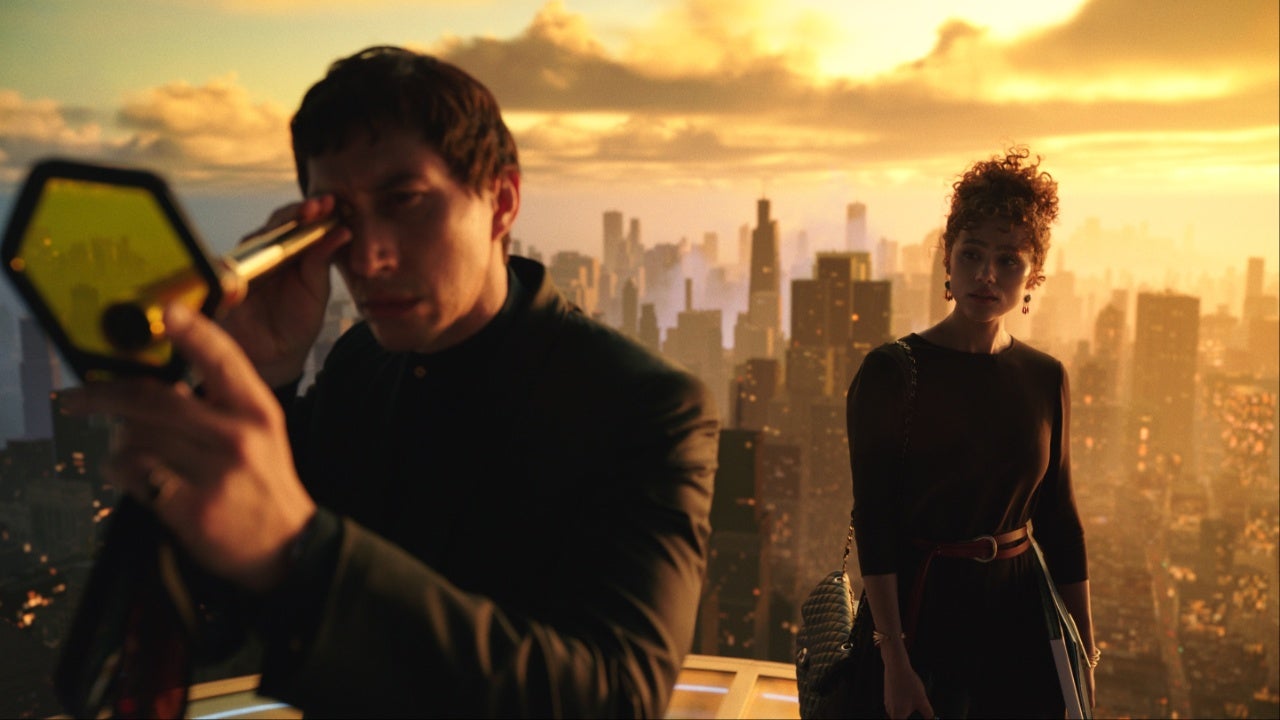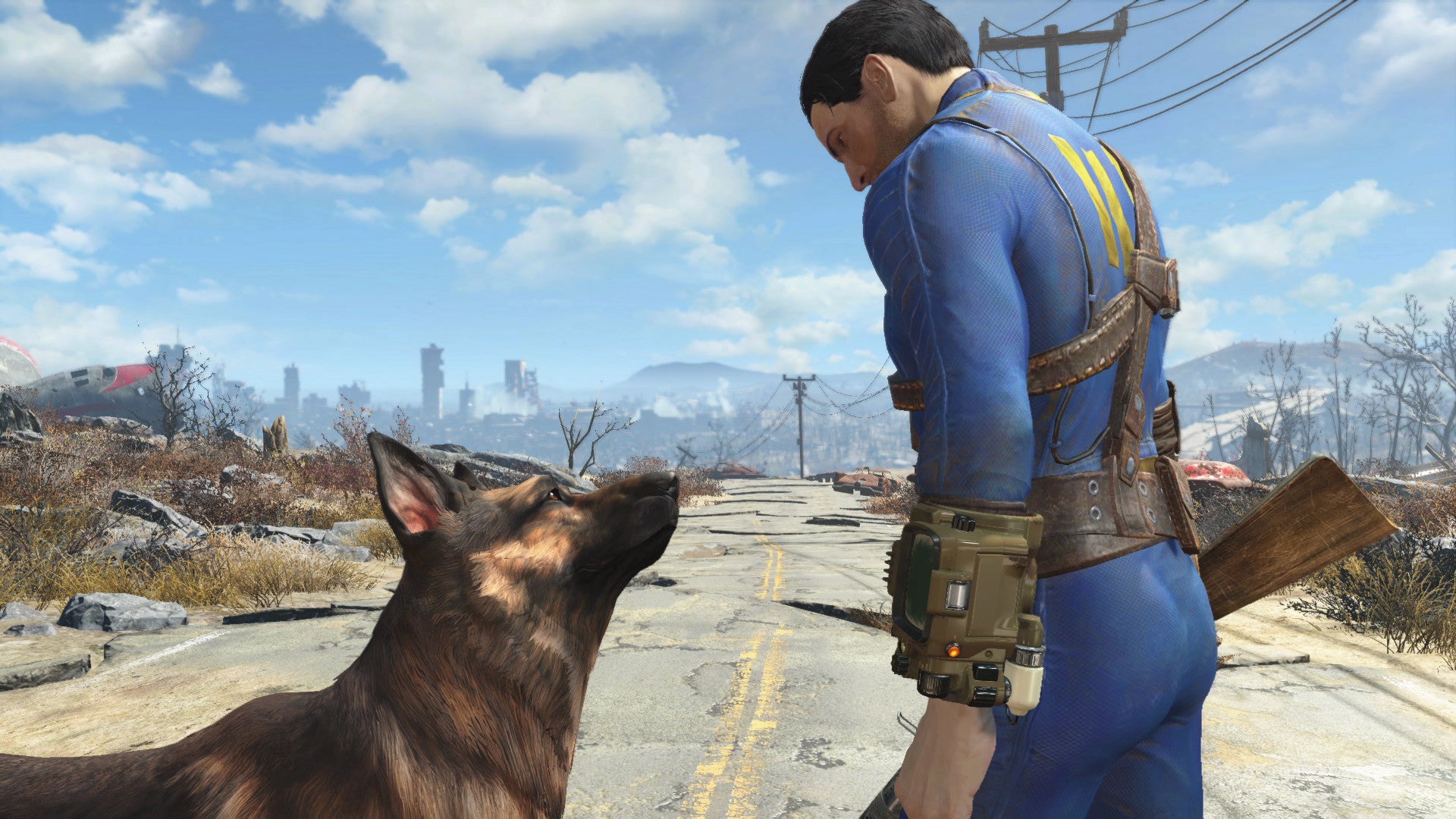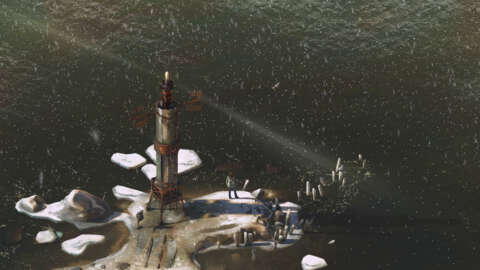Megalopolis will open in IMAX theaters in at a date TBD. This review is based on a screening at the Cannes Film Festival.
Francis Ford Coppola’s Megalopolis is a work of indulgent madness that cannot be separated from the story of its creation. Decades in the making, self-financed to the tune of $120 million, and featuring footage shot in the wake of 9/11, it frustrates and awes in equal measure – sometimes simultaneously. A story of love, time, creation, and the rise and fall of empires, the Godfather director’s strange, oblique, farcical, and highly talkative sci-fi homage splices together a hybrid version of modern America and ancient Rome. He remixes facts, legends, and numerous cinematic influences to create something deeply personal, for better and for worse. The result is a film that, at times, feels geared towards skull-numbing boredom, while equally capable of rewriting one’s mind, body and soul.
To try and track Megalopolis through the lens of its plot can be a head-spinning folly. Much of its 138-minute runtime is more metaphor than drama – sometimes spoken in Latin, sometimes through direct quotation of Hamlet. Adam Driver plays the charismatic, mischievous Cesar Catalina, a utopian, 23rd-century architect with the ability to stop time, but this sci-fi concept isn’t so much a driving force of the story as it is a background detail. It informs Driver’s character, and endears him to Julia Cicero (Nathalie Emmanuel), the daughter of a fierce political rival and a woman who recognizes and wants to learn Cesar’s powers. Further complicating matters: The murder allegations hanging over the head of our freeze-framing designer of buildings, and a number of characters – played by the likes of Giancarlo Esposito, Jon Voight, and Shia LaBeouf – whose motives revolve entirely around acquiring and maintaining power in the city of New Rome.
This retro-futurist metropolis, a hybrid of Roman antiquity and art deco New York inspired by H.G. Wells and Fritz Lang, is rendered in chintzy digital vistas awash in dictatorial gold. Megalopolis has a strangely cheap and flat appearance for something so expensive, but in the process, it lays bare the ugliness of its characters’ gilded bourgeois decadence. Cinematographer Mihai Mălaimare Jr. seldom moves the camera, ensuring meticulous compositions, but with a flat, TV-adjacent aesthetic set in a 2:1 aspect ratio that’s somewhere between HD TV and cinematic widescreen. This flirtation with television as a medium is even embodied by Cesar’s scandalous affair with a ratings-hungry news host, Platinum Wow (Aubrey Plaza), but the film eventually leaves this malformed sensibility behind, suggesting Coppola still holds the traditions of cinema in high regard. His vision of this far-flung society-on-the-brink is rife with a far less favorable view of contemporary technology (iPhones, touchless QR codes) as well as contemporary technological concerns like deep-faked videos of public figures.
But the technology getting most of Coppola’s attention here is the incandescent, shapeless, infinitely adaptable imaginary material Megalon. Rendered from the DNA of Cesar’s dying wife, it’s what the architect hopes to use to build his idyllic city of Megalopolis. This is, quite literally, the stuff of dreams, and an attempt to give semi-physical (though still largely ethereal) form to the idea of creativity. Megalopolis, the movie, may be a string of stylized metaphors, but Megalopolis the city is a deeply personal vision, which Cesar’s naysayers, and those with power and money, call a pipe dream – familiar territory for a filmmaker who’s spent his entire career having hurdles thrown in his path.
There are at least two characters in Megalopolis named Francis, but as a man able to see through the matrix of reality, Cesar is the one who makes for the clearest and most fitting analogue for Coppola and his idealistic pursuit of untested, alternative, and/or better methods of filmmaking. His cast consists of new and old collaborators alike, but the brief appearance of Coppola’s sister (and erstwhile Connie Corleone) Talia Shire feels particularly charged. As Cesar’s mother and guiding light, Shire feels like an envoy of a bygone cinematic sincerity, reminding her brother to find some semblance of soul within the zany energy of his latest passion project.
Megalopolis is so chock-full of ideas that Coppola’s melding of time periods eventually buckles under its own weight in a controlled demolition that initially confounds, but eventually shatters the screen in thrilling fashion. The film ends up not only being a cautionary tale about the end of empires, but one that likens the Hollywood system to empire as well (or a tyrannical extension of it).
Megalon enables Cesar to create in a boundless, mold-breaking fashion akin to what Coppola and his peers George Lucas, Martin Scorsese, and Steven Spieliberg achieved during the “New Hollywood” era of the 1970s. But Megalopolis’ echoes of this and other boom periods in American cinema are more than mere Easter eggs. The idea of romance Coppola is expressing requires him to reach back to origins of the medium, deploying silent film techniques like blue tints and iris shots when Cesar recalls his late love or locks eyes with his new beau. These bursts of exuberance cut through the movie’s otherwise featureless façade. The more these flourishes are indulged, the more human Megalopolis becomes, framing simple, fundamental ideas like love and creativity as world-saving forces. It seems like a naïve sentiment at the outset, but Coppola has long believed in America (to paraphrase The Godfather) and he now seems convinced that America is at its end. So he sounds the alarm, and gestures toward the pressing question of whether or not it can be saved.
These personal musings are also a double-edged sword. Reading Megalopolis as a tale of its own making also means viewing it through the various controversies swirling around its casting and production. But Coppola doesn’t seem concerned with reconciling with any behind-the-scenes thorniness. He’s more interested in forging his distinct, learned, occasionally silly, octogenarian-millionaire-vintner belief in the power of the movies into a desperate cry for us to recognize how deeply screwed we are at the hands of our current political systems. The legendary filmmaker has no qualms about making all-too-obvious references to modern political slogans, but he doesn’t fancy himself an activist.
His pleas, it turns out, are just as esoteric as his warnings, and they take truly bizarre but revolutionary forms. Just when it seems like Megalopolis might tip over into unearned sincerity – it’s his most earnest production since the 1982 musical flop One From The Heart – he stops contending with the existing boundaries of cinematic imagination and steps outside them entirely. At Cannes, this involved the sudden and surprising emergence of a flesh-and-blood actor who exchanged questions and answers with the on-screen Cesar. If there were ever a way to shake an audience out of its stupor – whether momentary boredom, or the general malaise of casually consuming conveyor-belt studio product mandated by committee – it is undoubtedly this.
How a live component will work during Megalopolis’ IMAX run remains to be seen , but this one decision viscerally embodies the ideas of transformation with which Cesar and the film wrestle. From there on out, it’s hard not to be locked in to what Coppola is doing. It marks a shift from a verbose, state-the-themes-out-loud Shakespearean farce, to a sincere reflection on the confines of cinema, and of physical and political structures.
As Cesar begins to create his vision of the new world, it’s articulated in kaleidoscopic and multi-dimensional imagery that defies and practically demolishes all conventional use of the movie screen. Images fold, wave, collapse, and expand. As Cesar’s sketches appear in overlapping triptychs , the intimately moving reality of Megalopolis fades into view. The drama is shot closer, and gets more intimate too. When more traditionally cinematic flourishes like long lens portraits are set against the confounding digital backdrops, they become disorienting and enrapturing all at once. It’s an impossible dream, somehow made entirely real, by a man who can see through time, and who wants to show us contrasting and conflicting but ultimately overwhelming visions of what might be if we save the world — and what will be if we don’t.
At the center of this profoundly frustrating, profoundly generous vision, is love. (An emerging theme in reviews of the big titles at this year’s Cannes – thought it wasn’t my takeaway from Furiosa.) Not just as an abstract concept, but the love of family, of mutual understanding, and of creative partnership. Coppola’s wife and longtime collaborator Eleanor was with him through the completion of Megalopolis, but she died just weeks before its premiere. That it ends with an on-screen dedication to her is both a fitting tribute in retrospect, and a haunting act of a movie becoming the ultimate, uncompromising version of itself: the tale of an artist in his twilight years, who loves deeply and fulfills the fantasy of stopping the ruthless march of time in its tracks, while striving to create (and spiritually communicate) a bold, revolutionary, transformative vision of a better tomorrow. It’s unlike anything you’ve ever seen.









